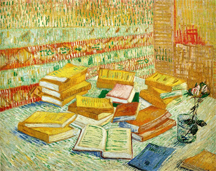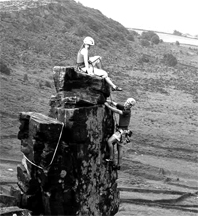 A novel, as nearly everybody knows, is a long story. The aspiring book author does not yet appreciate the points of difference, other than length, between the short story and the long story, or novel. Not until he sits down with his laptop and starts writing his novel does he discover the rules that govern its construction.
A novel, as nearly everybody knows, is a long story. The aspiring book author does not yet appreciate the points of difference, other than length, between the short story and the long story, or novel. Not until he sits down with his laptop and starts writing his novel does he discover the rules that govern its construction.
The young author who wishes to try his hand at something more ambitious than the short story should first assure himself that he is fitted for the task. Minor novelists, according to an editorial reviewer at John Wiley and Sons, Inc. are divided into three classes:
1. Those who know how to write but have nothing to write about;
2. Those who have something to write about but do not know how to write it; and
3. Those who have nothing to write about and could not write about it
if they tried.
I will eliminate the first class because I cannot provide the outlines of stories, and the third class because I do not want to waste your time. But the writer who has something worth saying, and hesitates because he does not know how to begin, is always eager to learn and persevere.
Components of a novel
A novel has two essential components: characters and plot. The author should conceive both before he writes a word. It is excellent practice to:
1. Make an outline of the plot;
2. Fill in the development of each chapter;
3. Show how the movement gets under way; and
4. How it reaches its culmination of interest near the end in what we call the “climax.”
Creating concrete characters
Many authors catalogue their characters in MS-Word or in a spreadsheet—they create the names, descriptions, relationships, approximate value or position, and other attributes. One, or sometimes two, of these characters must serve as the principal character or characters—the hero or heroine. The remaining characters must be people who come into direct contact with the principal characters, or secondary characters who influence the lives of the principal characters.
The aspiring author should avoid creating unnecessary characters, except to make the story more artistic, say by way of contrast. In classic novels and plays, authors usually made the villain “black and wicked,” simply to emphasize his opposite—the hero. This, in modified form, is allowed in a novel.
Writing the first chapter
The author should accomplish two things in the first chapter:
1. Introduce the hero, either directly by his entrance upon the scene, or indirectly by commenting about him
2. Establish the beginning of the plot. The author can subtly suggest what is to follow, or let the first action of the story establish the beginning of the plot.
A novel, like a short story, should begin with something besides prosy description or plain ticketing of characters. The first chapter should be strong, holding, impelling. What may be termed the “body of the book” must carry the story forward systematically, entertainingly, on a constantly ascending plane of interest.
Creating climatic interest
 The author’s goal is to grip the reader’s attention at the outset and hold firmly until the end. When the interest reaches its culmination, the story terminates in a climax and a conclusion. The climax is the dramatic point toward which the whole story has been progressing; the conclusion of the last chapter is necessary to explain the future of the characters, for their final disposal. Because this conclusion is necessary in the nature of an anti-climax, the author should make it as short as possible.
The author’s goal is to grip the reader’s attention at the outset and hold firmly until the end. When the interest reaches its culmination, the story terminates in a climax and a conclusion. The climax is the dramatic point toward which the whole story has been progressing; the conclusion of the last chapter is necessary to explain the future of the characters, for their final disposal. Because this conclusion is necessary in the nature of an anti-climax, the author should make it as short as possible.
Divisions in a novel
Dissecting the novel, we find that it is composed of a series of units called “chapters.” These are not mere mechanical breaks to make the reading easier, but links in the whole chain. Each is practically a short story by itself, with introduction, body proper, and climax; each is a miniature reproduction, in outline or construction, of the whole novel. The failure of the young writer to appreciate that chapters must have a certain form, with interest in the ascending plane from the first sentence to the climax, mars more novels than any other one thing.
I am in a position to examine a dozen or more books in manuscript each month, and I find this the prevailing fault. Often the chapters begin with interest and then taper off; often the climax is reached in the middle, and the latter half is given over to explanation.
I visualize a novel as a stairway, with the top step the climax, and every other step a chapter, each a definite gain toward the top one, yet each complete in itself, beginning at the foot of the preceding one, and rising to the foot of the succeeding one.
In shaping the story, the author should consider chapter length. As nearly as possible, chapter divisions should be similar in length. This does not mean the author must shorten or expand an incident because it does not fill the required number of pages; but that he should shape the incident itself so it naturally falls into the right space. A book with chapters similar in length is easier and more inviting to read than one in which length is an unnoted quality.
Creating character point-of-view
As I have suggested, the author must make the chapters the natural divisions, and not mechanical word-castles. A break in the story is needed for practically every change in the point of view, the scene, the group of characters before the reader, and for minor reasons that will suggest themselves. In one chapter, perhaps, the author will give the story to the reader as the hero sees it enacted; in another as the villain lives it; and in another as some other character notes the actions of these two. Each is a unit by itself.
The author may decide to develop a conversation or incident in one chapter. Perhaps the reader is shown the preparations for a picnic. When the scene shifts to the picnic, it is obvious that a new unit of place presents itself and demands a chapter division. Still again, the talk or deeds of one group of characters is in itself a unit; when another group comes before the reader, the story, except for the plot-thread, takes an entirely new tack, and another dividing line is reached.
Concluding advice
 Unlike the short story, it is not necessary for every part of a novel to carry the story a step nearer the climax. Very often one chapter describes a dramatic situation as one character sees it, and the next goes over the same ground of the plot by describing it as another character sees it. Both reach the same climax by different roads.
Unlike the short story, it is not necessary for every part of a novel to carry the story a step nearer the climax. Very often one chapter describes a dramatic situation as one character sees it, and the next goes over the same ground of the plot by describing it as another character sees it. Both reach the same climax by different roads.
After the budding author has mastered and absorbed these fundamentals by studying many books, he can then determine his aptitude for novel writing. Usually the beginner tries the short story, first, and after making a success of that, the novel. Writers who have failed miserably with the short story, however, have been known to make brilliant successes at longer works. It is all a question of natural inclination and aptitude.



